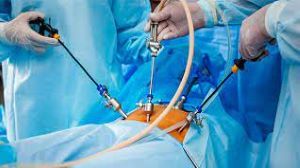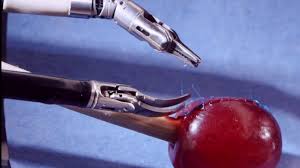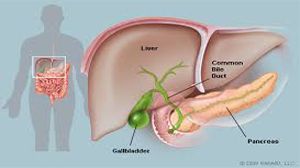Laparoscopic Precision: Revolutionizing Treatment for Large Intramural Fibroid Uterus
Add to
Share
1,449 views
Report
2 years ago
Description
Introduction: Fibroids, benign tumors that develop within the uterus, can cause a range of distressing symptoms and complications for women. Traditional treatment options often involved invasive surgeries and prolonged recovery times. However, the advent of laparoscopic surgery has revolutionized fibroid treatment by offering a minimally invasive approach that delivers unparalleled precision in addressing large intramural fibroid uteruses. This essay explores the remarkable benefits of laparoscopic surgery in transforming the management of these challenging cases, empowering women to regain their quality of life swiftly and effectively. Body: 1. Minimally Invasive Precision: Laparoscopic surgery involves using small incisions and specialized instruments to access and remove fibroids from the uterus. Compared to traditional open surgeries, this approach offers several significant advantages. Firstly, the smaller incisions result in minimal scarring, reduced blood loss, and lower risk of infection. Moreover, laparoscopic procedures allow surgeons to navigate and operate with exceptional precision, ensuring the targeted removal of large intramural fibroids while preserving healthy surrounding tissue. This precision minimizes the potential for complications and maximizes the chances of successful outcomes. 2. Rapid Recovery and Shortened Hospital Stays: The minimally invasive nature of laparoscopic surgery translates into faster recovery times and shortened hospital stays. With smaller incisions and reduced trauma to the body, patients experience less pain and discomfort post-operatively. Additionally, the risk of complications, such as wound infections and deep vein thrombosis, is significantly diminished. Patients often report a quicker return to their normal activities and a faster resumption of their daily routines, allowing them to regain their quality of life promptly. 3. Enhanced Patient Experience and Improved Cosmetic Results: Laparoscopic surgery not only improves medical outcomes but also enhances the overall patient experience. The smaller incisions and reduced tissue trauma result in less pain and scarring, contributing to a more favorable cosmetic outcome. Patients benefit from improved self-esteem and body image, which can positively impact their emotional well-being during the recovery process. The decreased reliance on pain medication also reduces the risk of adverse drug reactions and promotes a more comfortable and fulfilling recovery journey. 4. Lowered Risk of Uterine Complications: Large intramural fibroids can pose significant risks to the uterus, including distortion of the uterine cavity, impaired fertility, and pregnancy complications. Laparoscopic surgery offers a solution that addresses these risks effectively. By precisely removing the fibroids, surgeons restore the integrity of the uterus, potentially improving fertility outcomes for women seeking to conceive. Moreover, the minimally invasive approach reduces the likelihood of uterine scarring and complications during future pregnancies, enhancing reproductive possibilities for affected women. 5. Advancing Fibroid Treatment and Empowering Women: The advent of laparoscopic surgery for large intramural fibroid uteruses signifies a remarkable advancement in fibroid treatment. By providing a precise, minimally invasive option, it empowers women to take control of their health and make informed decisions about their treatment. The reduced invasiveness and improved outcomes contribute to increased patient satisfaction and a higher quality of life. This revolutionary approach instills hope and optimism, reshaping the narrative surrounding fibroids and offering renewed possibilities for affected women. Laparoscopic surgery has revolutionized the treatment of large intramural fibroid uteruses, offering a breakthrough approach that combines precision and minimally invasive techniques. Unlike traditional open surgeries, laparoscopic procedures involve small incisions and specialized instruments, allowing surgeons to navigate the uterus with exceptional precision. This advanced technique enables the targeted removal of large fibroids while preserving healthy surrounding tissue, minimizing the risk of complications and optimizing outcomes. The benefits of laparoscopic surgery extend beyond surgical precision. Patients undergoing this procedure experience reduced post-operative pain, minimal scarring, and a faster recovery period compared to traditional surgeries. The smaller incisions result in less tissue trauma, leading to a shorter hospital stay and a quicker return to normal activities. The improved cosmetic outcome of laparoscopic surgery enhances patients' self-esteem and emotional well-being during the recovery process. For women with large intramural fibroids, laparoscopic surgery offers a renewed sense of hope. By effectively removing these tumors, the procedure addresses potential risks such as uterine cavity distortion, fertility issues, and complications during pregnancy. Restoring the integrity of the uterus can improve fertility outcomes, while the minimally invasive approach reduces the likelihood of scarring and complications in future pregnancies. The advent of laparoscopic surgery represents a significant advancement in fibroid treatment, empowering women to take control of their health and make informed decisions about their care. It reshapes the narrative surrounding fibroids, offering renewed possibilities for affected women. This revolutionary approach not only transforms medical outcomes but also enhances the overall patient experience, providing a comprehensive solution that combines precision, rapid recovery, and improved quality of life. As laparoscopic surgery continues to evolve, it holds the potential to further refine fibroid treatment, expand reproductive possibilities, and empower women worldwide to overcome the challenges associated with large intramural fibroid uteruses. Conclusion: Laparoscopic surgery has revolutionized the treatment of large intramural fibroid uteruses, offering an array of benefits that were once unimaginable. Through its minimally invasive and highly precise nature, it provides patients with rapid recovery, shortened hospital stays, and improved cosmetic outcomes. The reduced risk of uterine complications and enhanced fertility possibilities further highlight the transformative power of this approach. As laparoscopic surgery continues to evolve, it promises to empower women, improve their quality of life, and redefine the landscape of fibroid treatment.
Similar Videos






